Some of the most common pork cuts include the pork shoulder, butt, ribs, loin, ham, belly, and bacon. Some of these are further grouped as the primal and sub-primal cuts.
As a buff of everything pork and a cooking school graduate, I’m no stranger to the pig’s anatomy. My experience with the popular pork cuts is a feast for the senses.
Today, we’ll be looking at the primal and sub-primal pork cuts. So, next time you hit your butcher store, let them know you’re no longer the average Joe when it comes to pork!
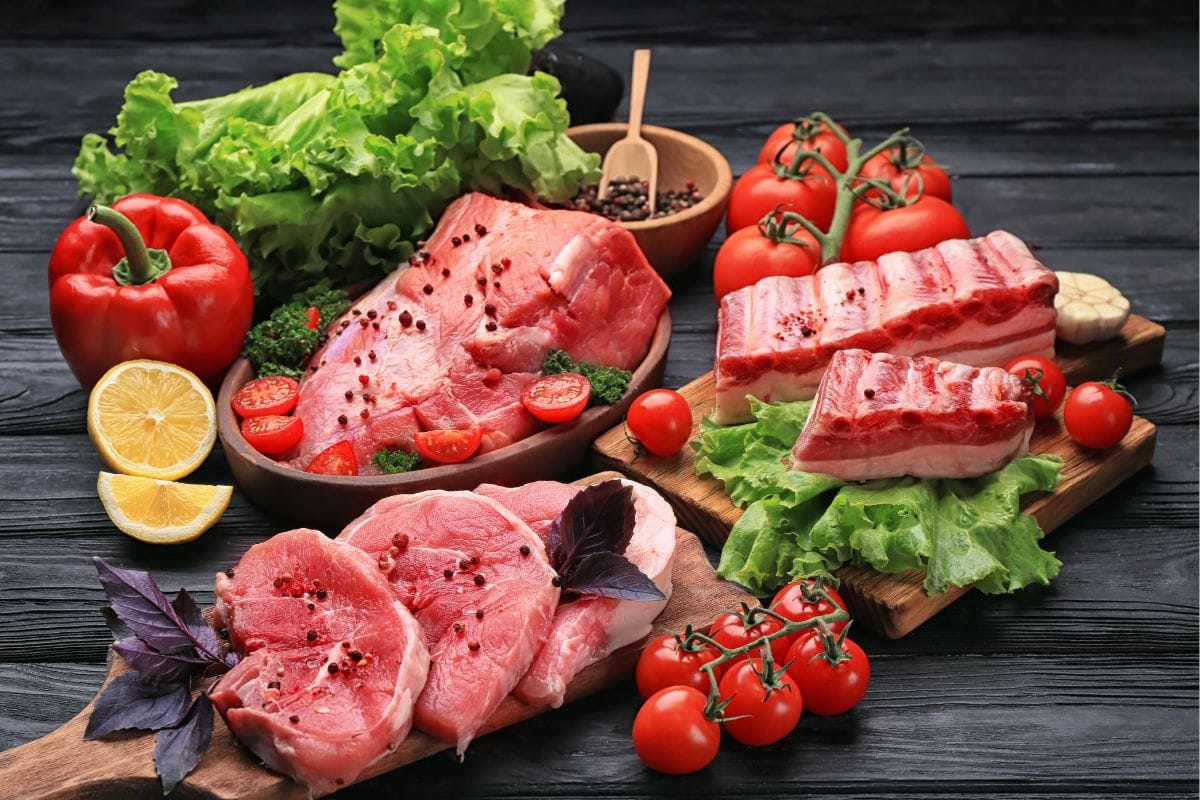
When it comes to primal cuts of pork, we’re talking about the big sections of the pig that get divided up for different purposes. So, let’s break out the pig down and get to know the primal cuts:
First up, we’ve got the pork shoulder. Some call it Boston butt. It’s that chunky part above the pig’s front leg. This primal cut has plenty of marbling and is perfect for things like pulled pork, roasts, and hearty stews.
The pork shoulder primal cut is divided into two sub-primal cuts: the pork butt and the picnic shoulder:
The pork butt, also called the Boston butt, is one of the most common pork cuts due to its versatility.
Okay, I know it sounds weird. Despite its misleading name, pork butt doesn’t come from the pig’s behind. It’s taken from the upper part of the shoulder. But it’s got a good amount of fat marbling, which gives it a rich, mind-blowing flavor.
And here’s the best part: pork butt is the king of slow cooking! You can braise it, roast it, and do whatever you want with it. It turns out unbelievably tender and easily shreddable. That’s why it’s a star in the world of pulled pork.
I must also mention that this cut is versatile. You can toss it into stews, whip up soul-warming soups, or slap it between buns for the most epic sandwiches. Also, ground pork butts are great for making pork sausages.
Tacos? Oh yeah, it works there too. The possibilities are endless, and the result is pure juicy, flavorful magic.
Below the Boston butt is the picnic shoulder, which is lower down the pork shoulder, closer to the front pork leg. It’s got a bit less fat but still brings some serious flavor.
You can use it for roasting, braising, or even grinding it up to make some delicious ground pork.
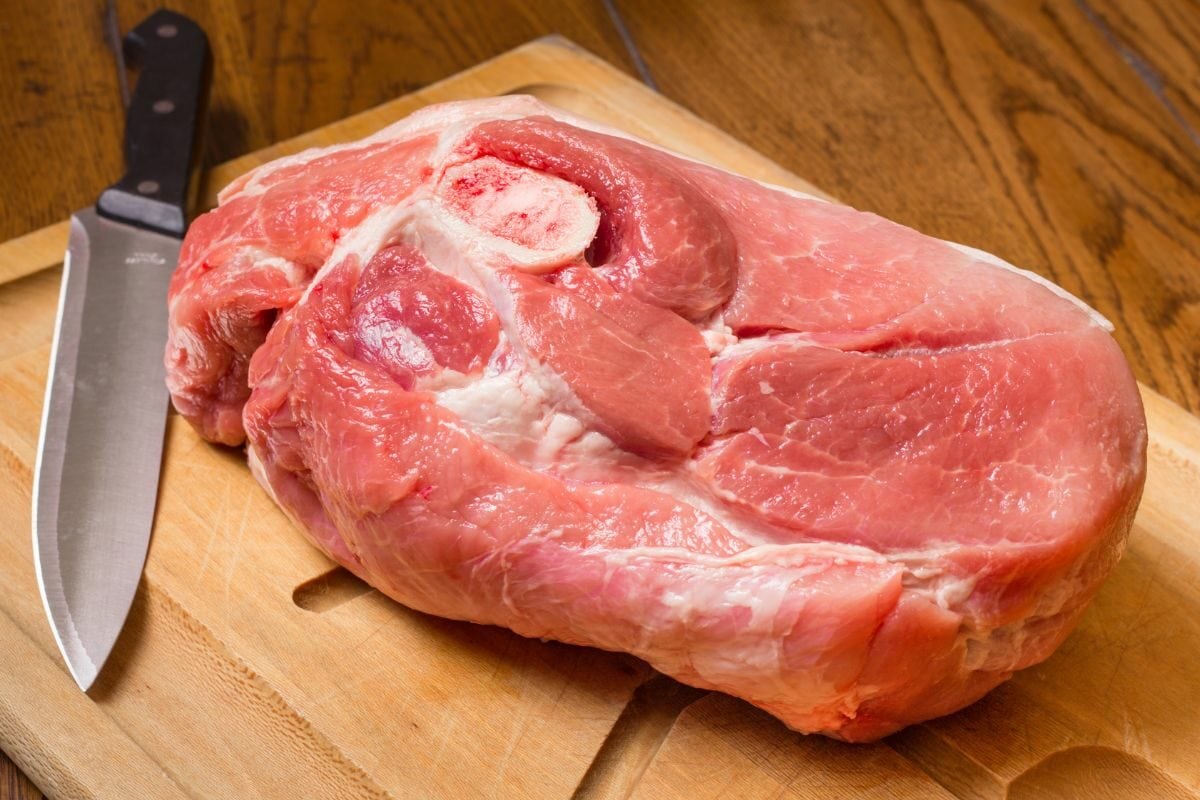
Moving on to the pork loin, which runs along the pig’s back. It’s divided into three main cuts: the pork chops, tenderloin, and the center cut loin roast.
The pork chops by the way are individual slices of the loin, and you can get them with or without the bone.
The pork loin chops are chops sliced from the loin region of the primal part explained earlier. They’re that area between the shoulder and the back leg.
These pork cuts, especially the center-cut loin chops and sirloin chops, are famous for being tender and juicy, which is why, for me, they’re the go-to for grilling, pan-frying, or baking.
Loin pork chops often come with the bone in and a lovely marble of fat. So that gives them that extra burst of flavor. It also keeps the meat nice and moist. Note that there are boneless pork chops. But these are closer to the pork rib chop.
I like to sprinkle my loin chop recipes with all sorts of herbs and spices to help the taste. And when it’s time to serve, I can’t resist pairing them with delicious veggies or creamy mashed potatoes.
You can also dip each slice in a mix of parmesan cheese and Italian seasoning.
The tenderest of the pork loin is the tenderloin. The pork tenderloin muscle is a long, slender cut of meat from the muscle that runs along the pig’s backbone. It’s super lean and has a meaty flavor. This means it’s low in fat but high in flavor.
It’s like the filet mignon of pork. You can cut it into medallions or fillets and expect a melt-in-your-mouth experience.
When it comes to cooking pork tenderloin, the possibilities are endless. You can go for a simple approach by seasoning it with salt, pepper, and maybe a hint of garlic. Then sear it in a hot pan until it’s beautifully browned on the outside. Finish it off in the oven, and that’s it!
You can get creative with marinades and rubs to infuse even more flavors into this cut. Maybe a tangy teriyaki marinade, a zesty herb, lemon rub, or a sweet and spicy barbecue glaze. The choice is yours, and it’s hard to go wrong.
One thing to keep in mind when cooking pork tenderloin is that it cooks relatively quickly due to its lean nature. You want to be careful not to overcook these tender pork cuts, which can result in dry meat. Aim for a tenderloin that’s still slightly pink in the center, and you’ll be rewarded with a tender and moist masterpiece.
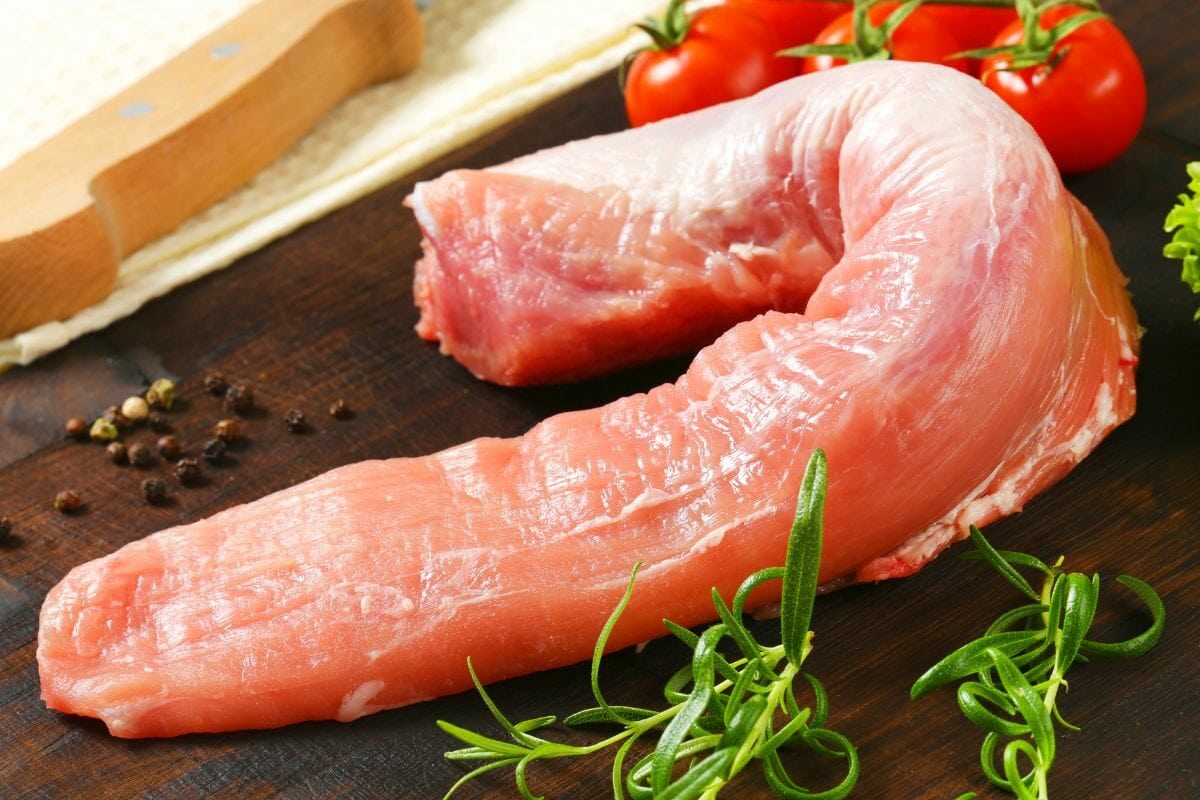
A center-cut loin roast is a cut of pork taken from the center section of the loin and sometimes the rib section. This pork cut is all about tenderness, flavor, and juiciness. It’s the holy grail of pork roasts.
This piece of meat is typically sold boneless. So it’s super convenient to work with. It’s beautifully marbled with just the right amount of fat, ensuring it stays moist and delicious during cooking.
I’d say it again – the best pork roast of all time is the center-cut loin roast. It typically has large fat caps—and this is particularly delicious. It will be easier to add simple seasonings like salt and pepper and let it sit in a crock pot until it is cooked. For a little crunch, you could also add red apples to your roast.
The pork belly is part of the primal cut of pork. It is a cut of meat that comes from—you guessed it—the belly of the pig. It’s a slab of meat that’s known for its rich flavor and incredible texture. This is what your pork bacon is made of.
You can also get a crispy, crackling delight by scoring the skin, seasoning it with salt and spices, and roasting it in a hot oven until it’s golden and crunchy.
Most skins can be trimmed to prevent the extra crunch. This way, you can easily transform it into a pancetta once removed. Belly pork is also great flavorful in various appetizers—such as the spicy ramen or the Bahn Mi sandwiches.
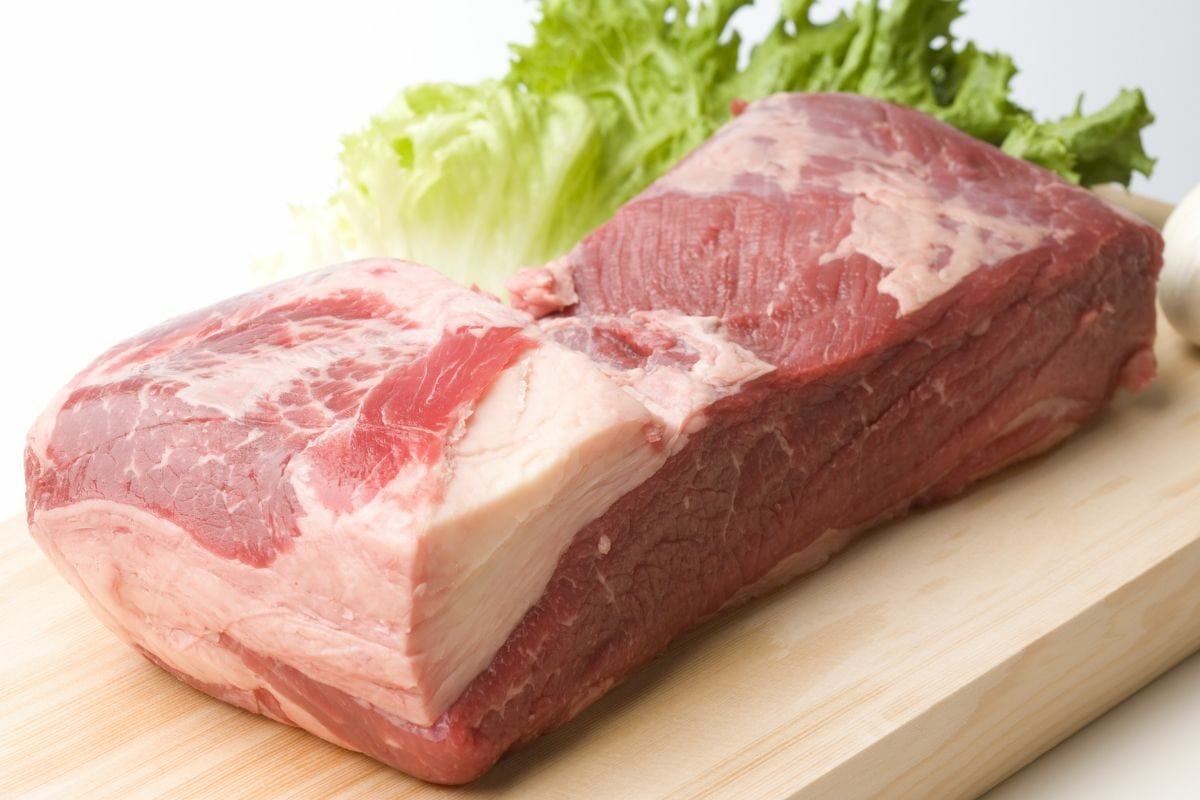
Moving down to the back leg, we’ve got the ham. It’s divided into two main cuts of pork:
First, there’s the butt portion. Yeah, I know, funny name, but we’re not talking about the rear end here. It’s the upper part of the pork leg. It is great with roasting or slow-cooking methods to get that mouthwatering ham goodness.
Then there’s the shank portion, which comes from the lower part of the leg. You’ll recognize it by its round bone. This cut is also called the fresh ham shank end.
It is a pork cut that comes from the upper hind leg of the pig. It’s a bit tough and has more connective tissue. But I think that’s actually a good thing because it means it’s perfect for slow cooking.
The ham shank is quite lean and needs some scoring before grilling or roasting it. You can also braise or simmer it for a while to transform it into something tender.
Ham shanks are perfect for soups, stews, and bean-based recipes. They bring a rich, savory flavor to the party and add that extra depth to your dish. You can also bake or roast ham shanks to create a hearty and mouthwatering main course.
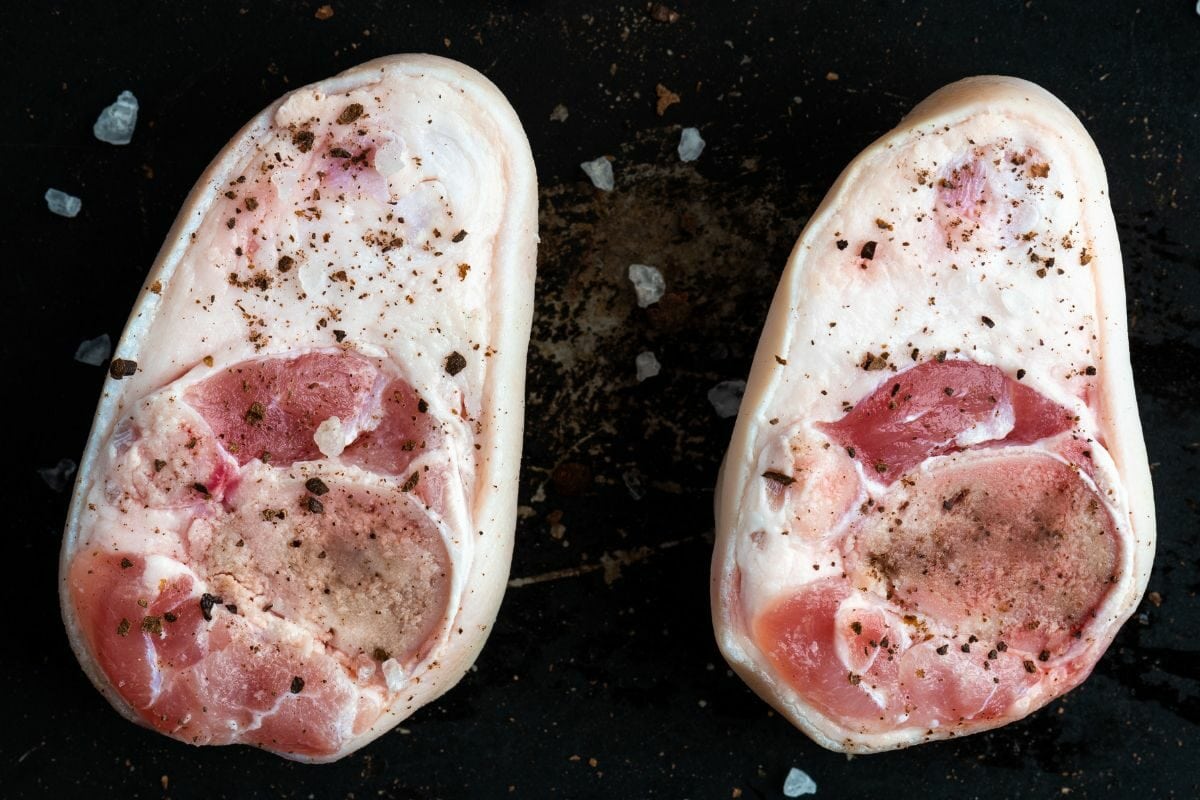
Last but not least, we’ve got the hock. This is not a large piece of the pig but it’s still a primal cut. It is the area just above the pig’s foot, and it’s a bit gelatinous. But don’t let that scare you off. It’s edible on its own and fantastic for flavoring stocks, soups, or hearty stews.
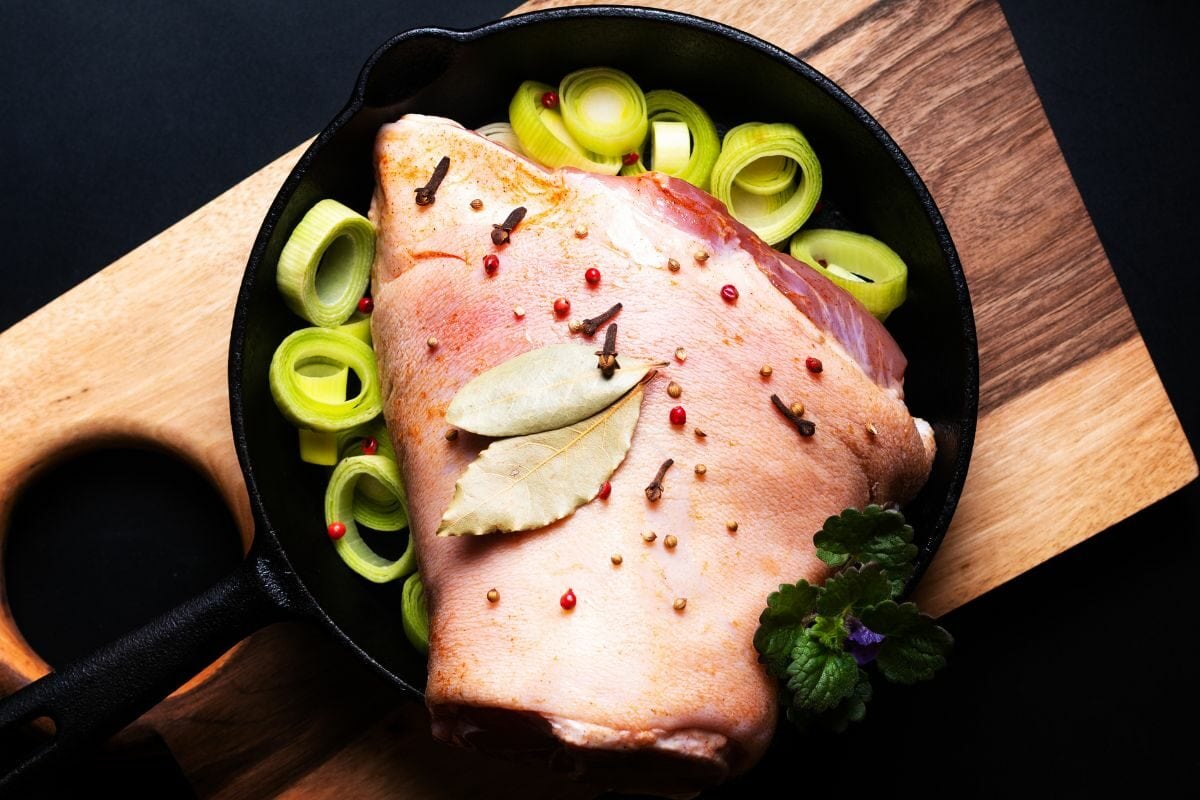
Next, I’ll show you other common pork cuts you can find on the pig or at the butcher store, in no particular order of importance. Note that these are smaller cuts taken from the primal cuts (pork loin specifically) explained earlier.
Who doesn’t like pork rib cuts that fall off the bone? That’s what you get with pork ribs. But there are various types of ribs from the pig.
First up, we’ve got the crowd-favorite: Baby Back Ribs. They are cut from the top of the ribcage, close to the spine. We call them “baby” back ribs because they’re smaller and more tender than other pork rib cuts. They’ve got more meat and less connective tissue.
What’s unique about them is they’ve got this delicate flavor and tenderness that makes you weak in the knees. Then they have a slight sweetness that’s just irresistible.
Spare ribs are found in the lower ribcage, close to the pig’s belly. They’re meatier and bigger than baby back ribs.
They’ve got a good amount of fat that adds a rich flavor while they’re cooking. But they require a bit more time on the grill or in the smoker to achieve that tenderness you need.
Louis-style ribs are the cool cousins of pork spare ribs. They’re trimmed down to remove excess cartilage and the rib tips. This gives them a more uniform and ra kind of rectangular shape.
These ribs bring a meaty, flavorful experience to the table that’s perfect for grilling or smoking. You’ll often find them seasoned with a dry rub or slathered in a tangy BBQ sauce.
Country-style ribs aren’t your traditional ribs, but they’re still delicious. They’re meaty cuts taken from the pork shoulder blade end of the loin.
Think of them like pork chops, but with the bone included. Country ribs are all about tenderness and juicy texture. You can cook them by grilling, baking, or slow-cooking them to perfection.
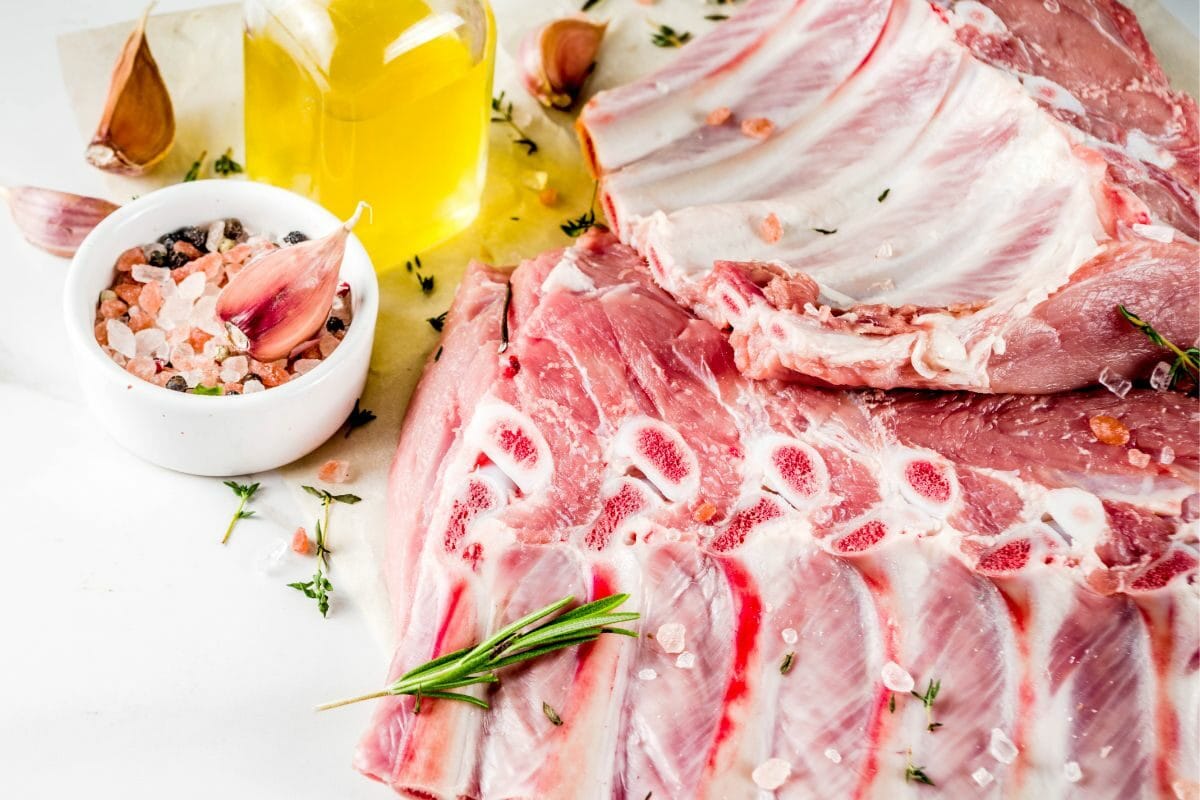
Rib chops are another fantastic cut of pork that I can’t get enough of. They’re tender, juicy meat with a perfect balance of meat and fat, all nestled right next to the bone.
They’re often called “center-cut” or “ribeye” chops because they’re cut from the rib section of the pig. You know, that part that’s close to the rib bones. That proximity to the bone adds so much flavor.
Rib chops are widely popular at restaurants due to their intense flavor and extreme tenderness. They’re best prepared grilled.
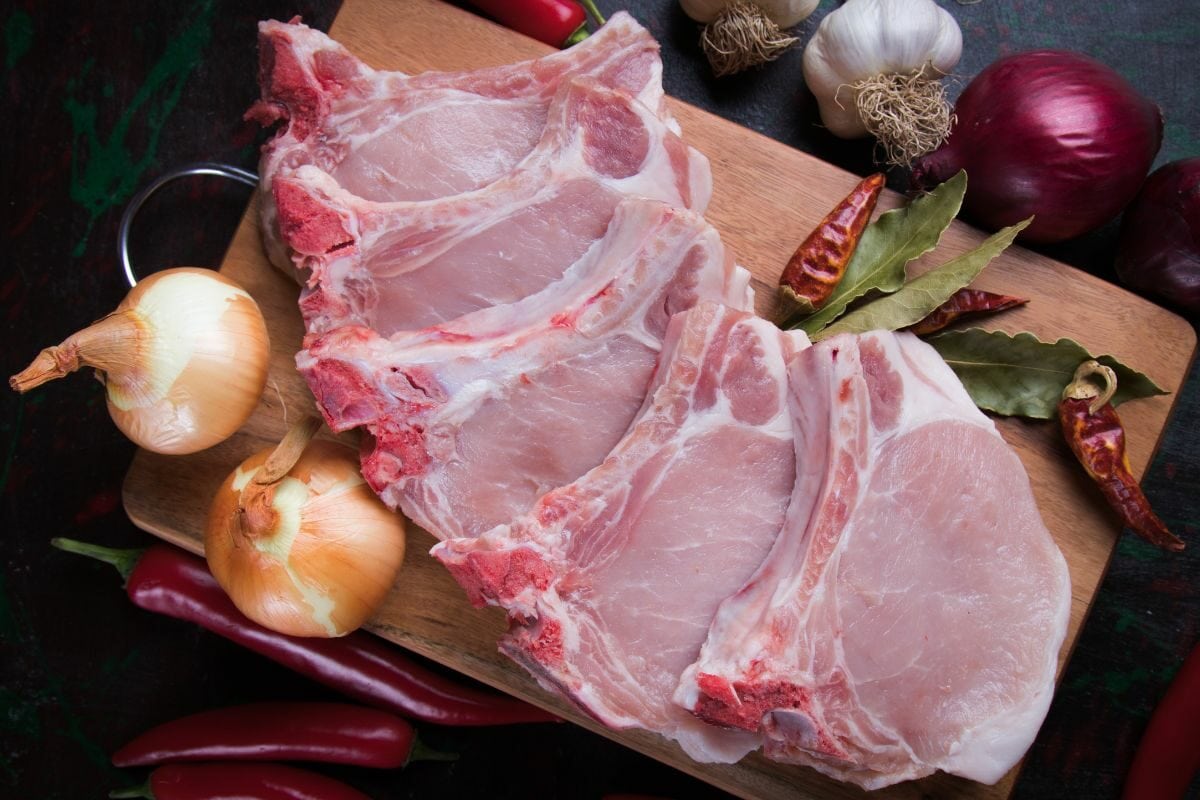
A rib roast is the king of roasts. It’s a prime cut of pork that comes from the ribs of the animal, hence the name. In other words, rib-roasted pork is pork that has ribs attached. Its appearance is like a steak rib roast (prime rib).
It’s a beautiful slab of bone-in meat, perfectly marbled with fat and so tender.
Now, the cooking process itself is a work of art. You’ll want to start with a high temperature to sear the exterior and lock in those juices. After that, you’ll lower the heat and let it slowly roast until it reaches your desired level of doneness. Whether you prefer a beautiful medium-rare or a tender medium, the choice is yours.
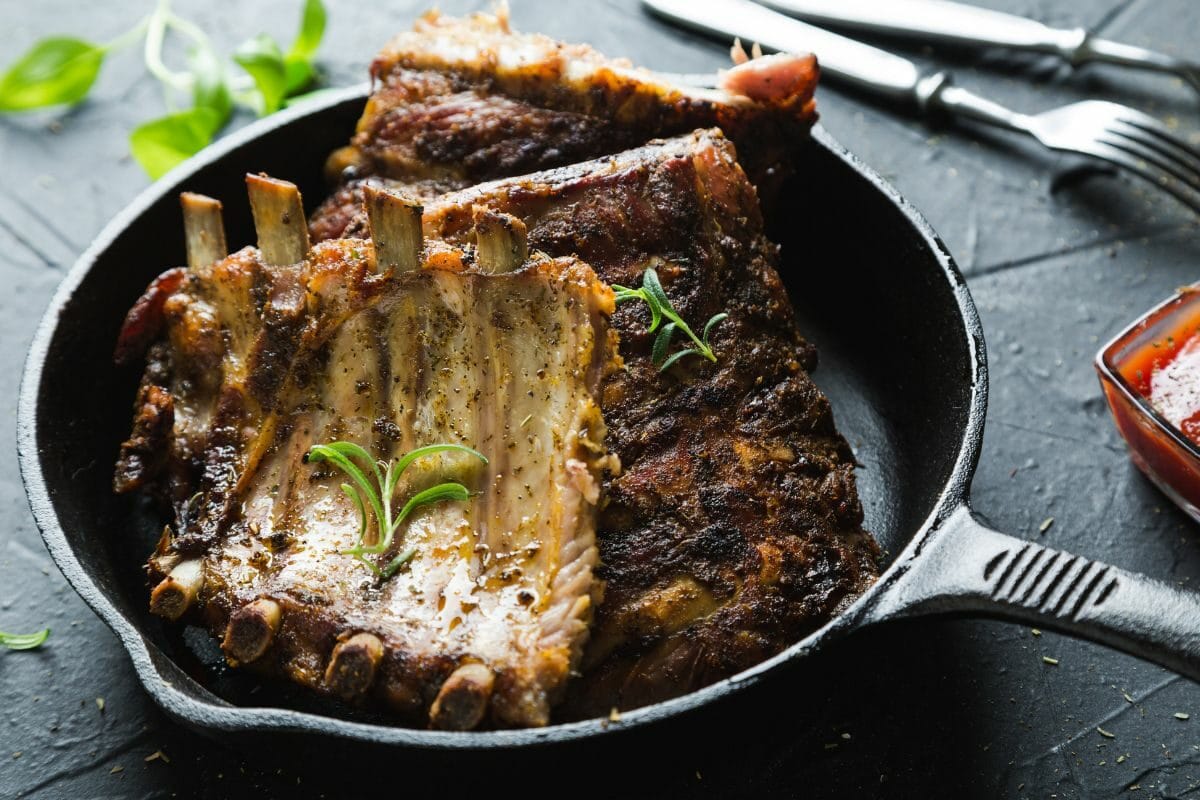
There you have all the popular cuts of pork as well as the primal cuts. Want some recommendations from me? Then I’d say give either pork tenderloin, pork loin, or ribs a try. The pork shoulder or butt is also a top one for me, especially if you fancy pulled pork. Or why not try all, taking each in one recipe at a time?